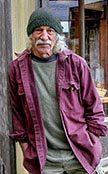Just a few words about the ’50s in general, in that they were the prelude to the ’60s. If you want a comprehensive picture of the ’50s, a good book is The Fifties by David Halberstam.
The ’50s in the United States was an era of prosperity and optimism. World War II was over and America turned its war-time production facilities into consumer production.
The GI Bill paid for veterans to go to college, and provided low-interest loans for buying homes. (The benefits went mainly to white veterans.)
A Wave of Prosperity
It was a time of plenty. There were jobs, with benefits; unions were strong. People bought large homes in the suburbs, along with labor-saving appliances.
The “baby boom,” referring to the population growth that occurred between 1946-1964, with its peak in 1957, added 50 million babies by the end of the 1950s; it was the highest birthrate in American history.
It turned out to be an era of consumerism; it was an era of conformity.
The Man in a Grey Flannel Suit, by Sloan Wilson, was written in 1956, and followed by the movie with Gregory Peck and Jennifer Jones, about conformity and the struggle of an individual to escape devotion to material culture. The Organization Man, by William H. Whyte, published in 1956, depicted the empty life of people working for corporations, who sacrificed individuality for corporate safety.
I read these books with interest when I was in college (1953-’57), and, early on, worried about conformity, the blandness of business life, the dullness of the business world.
“The Best Minds of My Generation”
Jack Kerouac, Neal Cassady, Allen Ginsberg, William Burroughs, Gregory Corso, Gary Snyder, Joanne Kyger, Laurence Ferlinghetti, Dianne Di Prima and Michael McClure are some of the most prominent names associated with what Kerouac titled the Beat Generation. (It seems to me it wasn’t a “generation” at all, but a very small group of artists, mainly poets and writers.) The term “beatnik” was coined by San Francisco Chronicle columnist Herb Caen, apparently taking the “nik” from the Russian satellite Sputnik. It seemed sarcastic; “beatnik” was a watered-down stereotype.
As with the ’50s, I can’t write about the beats with any authority or expertise. But these were the artists of most interest to me in the ’60s, before the hippies came along. Especially Kerouac, Snyder, and Burroughs.
 The Beats grew up during the depression and rejected consumerism and convention. Many of them expressed their alienation from “straight” society in vocabulary borrowed from jazz musicians.
The Beats grew up during the depression and rejected consumerism and convention. Many of them expressed their alienation from “straight” society in vocabulary borrowed from jazz musicians.
I picked up a copy of Howl by Allen Ginsberg at City Lights bookstore on one of my lunchtime walks when I was an insurance broker in the early ’60s. “Moloch! Moloch! Robot apartments! invisible suburbs! skeleton treasuries! spectral nations! Invincible mad houses! Granite cocks! Monstrous bombs!”
The Beats were saying things that no one else was. They took drugs, believed in free sex, despised materialism, and pioneered new methods of expression.
The most influential books for me then were Kerouac’s On the Road, and William Burroughs’ Naked Lunch.
But to me, there was something dark about many of these artists. Some kind of resentment, whatever you might call it. I was drawn to the poetry, the rejection of the dull and materialistic ways of the era, the notion of expanding one’s consciousness, the improvisation, yet…
Darkness of the Beats
It seems to me that the word “beat” was used both in the sense of having the beat of music, and at the same time as in “beaten,” or down and out. There seemed to be threads of nihilism and pessimism running through much of their art. Society sucked, and there wasn’t much you could do about it.
Poet Jonathan Greene just wrote me: “Back in the day there was a claim the term for the Beats came from beatific.”
The Beats seemed to put you down, or to put you on. It was subtle. At a Fillmore concert one night, Peter Orlovsky was walking around with Neal Cassady, and came up to me and said, “This is Neal Cassady, the model for Dean Moriarty in On the Road,” as if he were talking to a tourist.
It’s hard to pinpoint it, but I often felt as if the Beats were making fun of me. I wasn’t as hip; I wasn’t as cool; I wasn’t an artist.
I think a lot of what made them distinctive was drugs: marijuana, speed, heroin, yage, and peyote. Later, LSD, opened up the “doors of perception.” Drugs gave then an insight, a different take on reality, and set them apart from “straight” people.
With the musicians and artists that came along in the ’60s, it was entirely different, as if a window of sunshine opened up. No more bitterness, no more sarcasm…



Lloyd,Ihave all your books and am looking forward to your next one. On the half acre I think. Keep up the good work
good blog entry. nice to get “first-hand” information.
junky was entertaining but I couldn’t make it through naked lunch… too tedious for me.